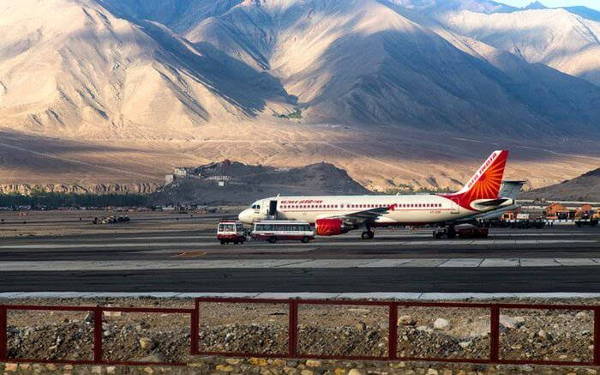Eighteen major airports in India will get additional meteorological instrumentation support, output from which will enhance the overall safety of flight operations and contribute towards the smooth functioning of airports round the year.
The India Meteorological Department is finalising the set of instruments which will be installed at these select airports and testing for some of these are presently underway.
The airport meteorological instrument support upgrade will provide a huge boost for the Indian aviation sector that has grown significantly in recent years. According to the latest figures provided by the Ministry of Civil Aviation, there are 129 operational airports in India, of which 29 are equipped for international flight operations whereas 90 operate for domestic purposes and 10 are custom.
The Ministry of Earth Sciences (MoES) will spend Rs 80 crore for this instrumentation upgrade, which, say experts, is being planned after a gap of several years.
IMD, operating under the MoES, provides meteorological guidance as prescribed by the Director General of Civil Aviation (DGCA) and International Civil Aviation Organisation. IMD operates 18 Aerodrome Meteorological Offices in addition to 54 Aeronautical Meteorological Stations located at domestic and international airports in the country. “At the time of planning this upgrade in meteorological instruments, the ministry consulted with and gathered inputs from the Airports Authority of India, the Indian Air Force — who are the actual users,” said K S Hosalikar, head of the Surface Instrumentation Division, IMD, Pune.
Some of the airports include Delhi, Hyderabad, Chennai, Mumbai — all of which were shortlisted for operating more than 500 flights in a day. Under normal circumstances (pre-Covid-19 pandemic), Delhi operates over 1,000 flights per day and Mumbai operates about 900 flights per day.
A large number of airports selected in the initial phase of this upgrade are located in northern India, which sees frequent flight operation disruptions due to poor visibility caused either by fog, snowfall or rain during the monsoon and winter months. Cancellation, delays or even temporary closure of airports lead to huge economic losses, annually.
Among the most vital instruments that will be additionally deployed is one to improve the visibility that is factored-in by the pilots under the Runway Visual Range. For the first time, scatterometers — that give wind speeds — will be introduced at Indian airports. Another instrument to calculate the cloud height over and around the airport periphery — celiometer — will feature in the IMD’s latest upgrade planned for the aviation sector.
“Visibility plays a crucial role in deciding the flight landing and… its diversion or cancellations,” Hosalikar said.
The Met department will deploy digital current weather systems that will relay real-time wireless weather information to the Air Traffic Control, thereby helping improve the functioning of the airports during all weather and seasons.
Airports with flight operations of less than 500 flights per day and those newly developed under the UDAAN scheme, which have relatively fewer flight operations, will be covered in the later stages of the upgrade.
“The specifications are almost finalised. We are hopeful that by the end of next year, we should be able to introduce the upgraded facilities at all 18 airports,” said Hosalikar. The Surface Instrument Division operating at IMD, Pune, is responsible for the installations and maintenance of the airport meteorological instruments. The Pune-based Meteorological Training Institute of IMD offers required training to the aeronautical meteorological officers who are deployed at airports.
Source: IE
You may also like
-
Dot Simplifies Approval Processes For Telecom Licenses And Wireless Equipment
-
PM to Inaugurate SEMICON India 2024 on 11th September
-
Shri Piyush Goyal Sets 500 Million Tonnes Domestic Steel Production Target by 2034
-
NHAI to Track Around 100 Toll Plazas with GIS-Based Software for Seamless Movement of Traffic at National Highways
-
“Marching Towards Building A Digitally Connected Bharat and An Atmanirbhar Telecom Sector”: Union Minister Jyotiraditya Scindia
